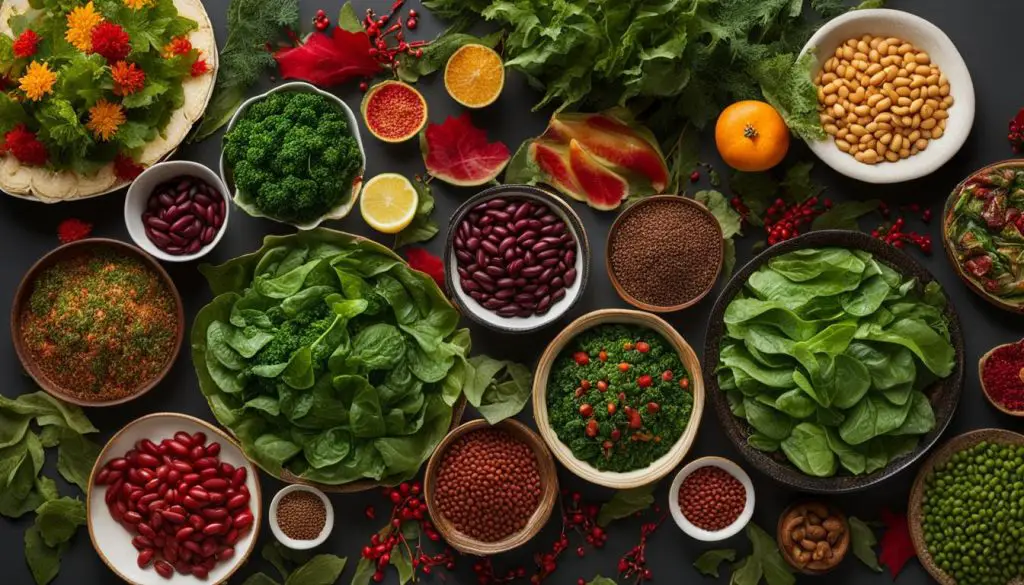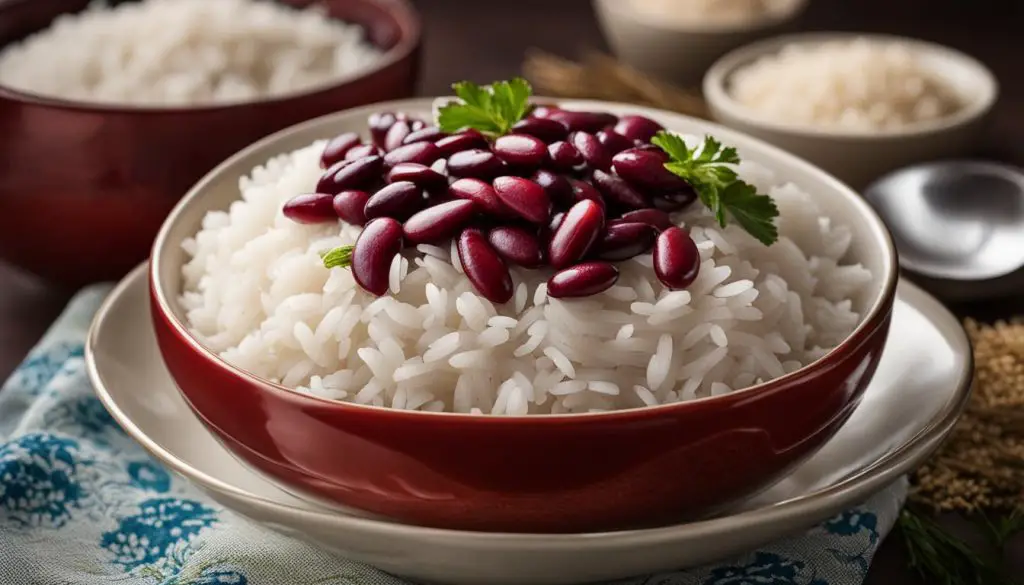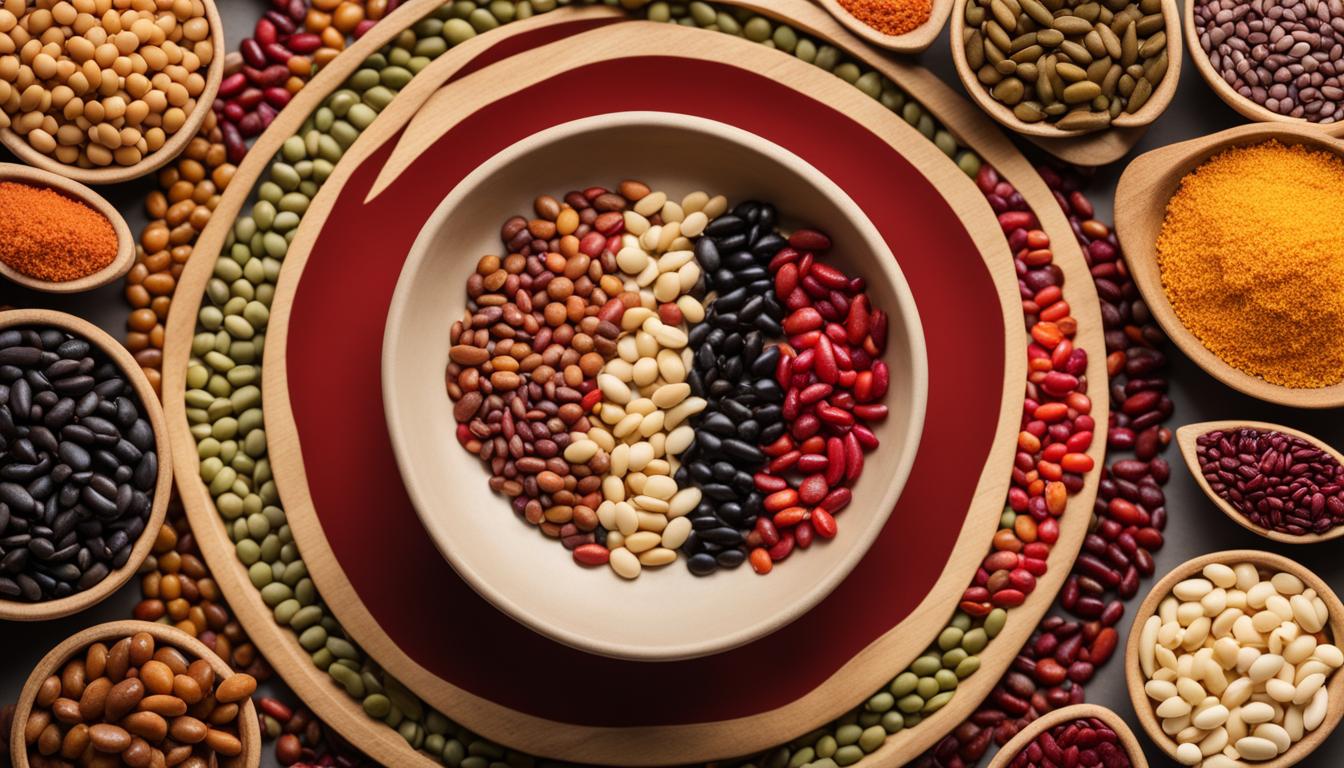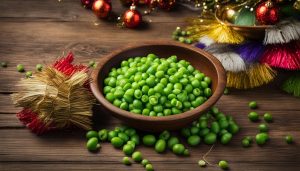Traditionally, certain foods are believed to bring good luck in the year ahead. These New Year’s food traditions from around the world have unique meanings and are well worth considering to bring fortune into your year.
Pigs are thought to bring good luck, which is why pork is a popular food choice on New Year’s Day. Black-eyed peas are associated with luck and have a long history of being eaten on New Year’s Day. Leafy greens, such as cabbage and collard greens, represent wealth and prosperity. Rice and red beans are commonly eaten in Asian cultures for luck and prosperity. Cornbread is considered lucky because of its golden color, resembling gold. Lentils are often served in Italian households on New Year’s Eve for their resemblance to coins. Fish, especially herring, is eaten in Scandinavian countries for good fortune. Noodles symbolize longevity and are often consumed in Asian countries on New Year’s Day. Fruits like oranges, pomegranates, and grapes are thought to bring luck and prosperity due to their round shape and vibrant colors. Dumplings are a symbol of good fortune and are commonly eaten for luck during Lunar New Year celebrations. Cakes, like the Greek Vasilopita, are served on New Year’s Day and may contain a hidden coin for good luck.
Contents
- 1 Why Pork is a New Year’s Food Tradition
- 2 The Luck of Black-Eyed Peas
- 3 Rice and Red Beans for Prosperity
- 4 Conclusion
- 5 FAQ
- 5.1 What are some traditional New Year’s foods believed to bring good luck?
- 5.2 Why is pork a New Year’s food tradition?
- 5.3 What is the significance of black-eyed peas on New Year’s Day?
- 5.4 What do greens symbolize and why are they eaten on New Year’s Day?
- 5.5 Why are rice and red beans commonly eaten on New Year’s Day in Asian cultures?
- 6 Source Links
Key Takeaways:
- Pork is a popular choice on New Year’s Day for good luck.
- Black-eyed peas are associated with luck and have a long history of being eaten on New Year’s Day.
- Leafy greens, such as cabbage and collard greens, represent wealth and prosperity.
- Rice and red beans are commonly eaten in Asian cultures for luck and prosperity.
- Fruits like oranges, pomegranates, and grapes are thought to bring luck and prosperity.
Why Pork is a New Year’s Food Tradition
Pork is highly regarded as a lucky food choice on New Year’s Day. This tradition stems from the belief that pigs symbolize abundance, progress, and good fortune. Pigs behave differently than other animals, as they root forward and move in the same direction you want to head in the new year. By consuming pork on this special day, you are aligning yourself with the positive energy and progress that pigs represent.
The tradition of eating pork on New Year’s Day is deeply rooted in cultural practices and has been passed down through generations. This auspicious pig is believed to have originated from German and Eastern European traditions, brought to America by early settlers. Today, it is widely embraced by many cultures as a way to invite good luck and prosperity into the new year.
“Eating pork on New Year’s Day is like putting the best foot forward, setting the tone for a year filled with luck and success.” – Chef Jessica Smith
Whether it’s a succulent roast, tender pork chops, or flavorful sausages, pork is a delicious centerpiece for your New Year’s feast. The rich and savory taste of pork, coupled with its symbolic significance, makes it a popular choice for those seeking to start the year on a positive note. So, why not join the tradition and savor the flavors of lucky pork on New Year’s Day?
Pork Consumption on New Year’s Day Around the World
Pork is not only a beloved New Year’s food tradition in many Western cultures but is also celebrated in various forms across the globe. Here are some fascinating examples:
| Country | Pork Dish |
|---|---|
| China | Roast Suckling Pig |
| Spain | Jamon Ibérico |
| Philippines | Lechon |
| Cuba | Pernil Asado |
| Japan | Tonkatsu |
These are just a few examples of how pork holds a special place in New Year’s traditions around the world. While the specific dishes may vary, the shared belief in the luck and auspiciousness of pork unites cultures in their celebrations.
The Luck of Black-Eyed Peas
Black-eyed peas are a time-honored tradition on New Year’s Day. They are associated with luck and have a rich history. One theory connects the tradition to the Civil War, where Union soldiers raided the Confederate army’s food supply and left behind only black-eyed peas. Another theory links black-eyed peas to African American history, where newly-freed enslaved people celebrated the Emancipation Proclamation with dishes made of black-eyed peas. Black-eyed peas have also been considered lucky in Ancient Egypt, showcasing humility to the gods. Eating black-eyed peas on New Year’s Day is a symbolic way to increase the chances of a prosperous new year.
Traditionally, black-eyed peas are prepared in various ways to add flavor and symbolism to the dish. One popular dish is Hoppin’ John, a Southern dish made with black-eyed peas, rice, and bacon. The peas symbolize coins, while the rice represents wealth and prosperity. This dish is believed to bring good luck and financial success in the coming year. Other variations include serving black-eyed peas with collard greens to represent money and cornbread to symbolize gold. These combinations create a hearty and meaningful meal for New Year’s festivities.
To incorporate black-eyed peas into your New Year’s celebrations, consider trying recipes like Black-Eyed Pea Salad, Black-Eyed Pea Soup, or even Black-Eyed Pea Hummus. These dishes not only taste delicious but also bring a sense of tradition and good fortune to your dining table. Whether you follow the historical significance or simply enjoy the flavors of black-eyed peas, incorporating them into your celebratory meal is a wonderful way to start the year with luck and prosperity.

| Green Vegetable | Symbolism | Recipe Ideas |
|---|---|---|
| Collard Greens | Wealth, financial success | Southern-style collard greens with smoked bacon |
| Cabbage | Wealth, prosperity | Crunchy cabbage slaw with tangy dressing |
| Spinach | Abundance, fertility | Garlic sautéed spinach with lemon |
Rice and Red Beans for Prosperity
When it comes to welcoming the new year with good fortune, Asian cultures have a long-standing tradition of incorporating rice and red beans into their New Year’s Day meals. Both of these auspicious ingredients symbolize luck, prosperity, and abundance. By including rice and red beans in your celebrations, you are not only embracing time-honored customs but also inviting positive energy and blessings into your life.

The Significance of Rice
Rice holds great importance in Asian cultures as a symbol of prosperity and good luck. Its abundant harvest and nourishing qualities make it a staple food, and it is believed that consuming rice on New Year’s Day will bring an abundance of blessings throughout the year. Rice is often prepared in various ways, such as steamed, fried, or as part of a delicious rice cake called mochi. The act of sharing a meal with loved ones, particularly one that includes rice, fosters unity, happiness, and a prosperous future.
The Luck of Red Beans
Red beans, also known as adzuki beans, are believed to bring wealth and good luck in many Asian cultures. Their vibrant red color is associated with vitality, energy, and positivity. Red beans are commonly used in traditional desserts such as red bean soup or as a filling in sweet dumplings. Including red beans in your New Year’s menu symbolizes the desire for financial success and a prosperous year ahead.
“By embracing the tradition of rice and red beans on New Year’s Day, you are inviting good fortune and prosperity into your life.”
The combination of rice and red beans in dishes like rice and beans or sticky rice with red bean paste further enhances their symbolic meaning. These delightful culinary creations not only satisfy the taste buds but also carry the hopes and dreams for a prosperous future. So, as you gather with family and friends to celebrate the new year, remember to savor the flavors of rice and red beans, knowing that each bite brings you closer to a year filled with abundance and prosperity.
| Symbol | Ingredient | Meaning |
|---|---|---|
| Luck | Rice | A symbol of prosperity and good fortune, rice invites blessings and abundance into your life. |
| Wealth | Red Beans (Adzuki Beans) | Red beans signify financial success and a prosperous year ahead, symbolizing vitality and energy. |
Conclusion
In conclusion, the foods you choose to eat on New Year’s Day can hold significant meaning and symbolism. From pork and black-eyed peas to greens and rice with red beans, these traditional dishes are believed to bring good luck, wealth, and prosperity in the year ahead.
By incorporating these lucky foods into your New Year’s menu, you can set your intentions for a fortunate and prosperous year. Whether you follow these auspicious traditions or simply enjoy the flavors and cultural significance, the act of partaking in these foods can be a delightful way to start the year on a positive note.
Remember, beans are considered lucky for the new year and can bring good year luck. Make sure to include these lucky foods in your celebration and embrace the traditions that have been passed down through generations. Here’s to a year filled with luck, abundance, and prosperity!
FAQ
What are some traditional New Year’s foods believed to bring good luck?
Some traditional New Year’s foods believed to bring good luck include pork, black-eyed peas, greens, rice, red beans, fish, noodles, fruits, dumplings, and cakes.
Why is pork a New Year’s food tradition?
Pork is a New Year’s food tradition because pigs are associated with good luck. Their behavior of rooting forward and moving in the same direction as desired represents progress and moving forward in the new year.
What is the significance of black-eyed peas on New Year’s Day?
Black-eyed peas are associated with luck and have a long history of being eaten on New Year’s Day. They are believed to increase the chances of a prosperous new year.
What do greens symbolize and why are they eaten on New Year’s Day?
Greens, such as collard greens and cabbage, symbolize wealth and prosperity. Eating greens on New Year’s Day is believed to bring good fortune and ward off evil spirits.
Why are rice and red beans commonly eaten on New Year’s Day in Asian cultures?
Rice symbolizes prosperity and good luck in Asian cultures, and it is believed to remove bad omens. Red beans, often paired with rice, are associated with wealth and are thought to bring prosperity in the new year.





